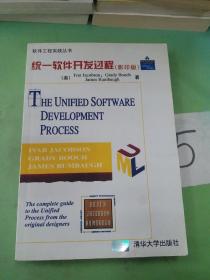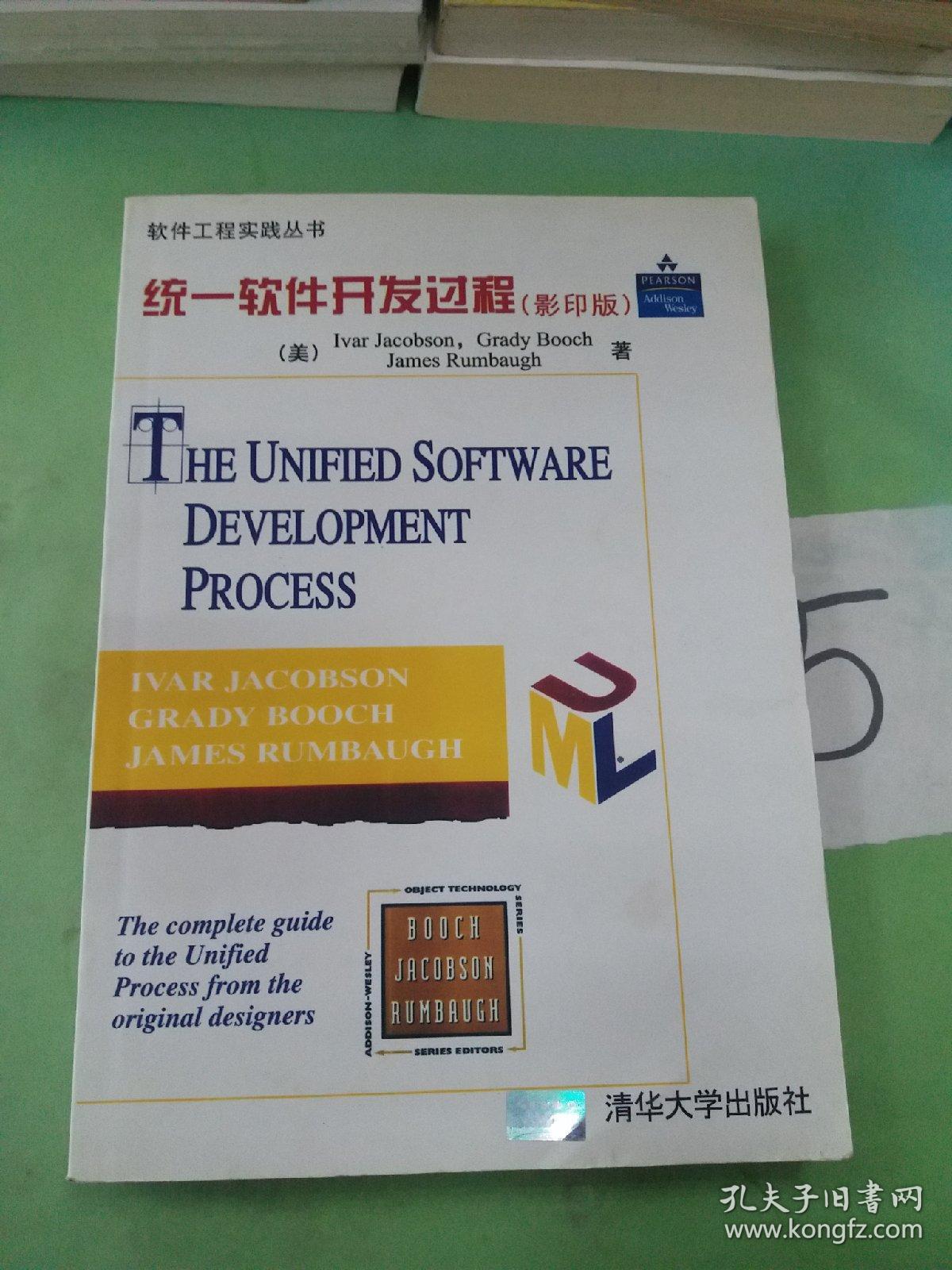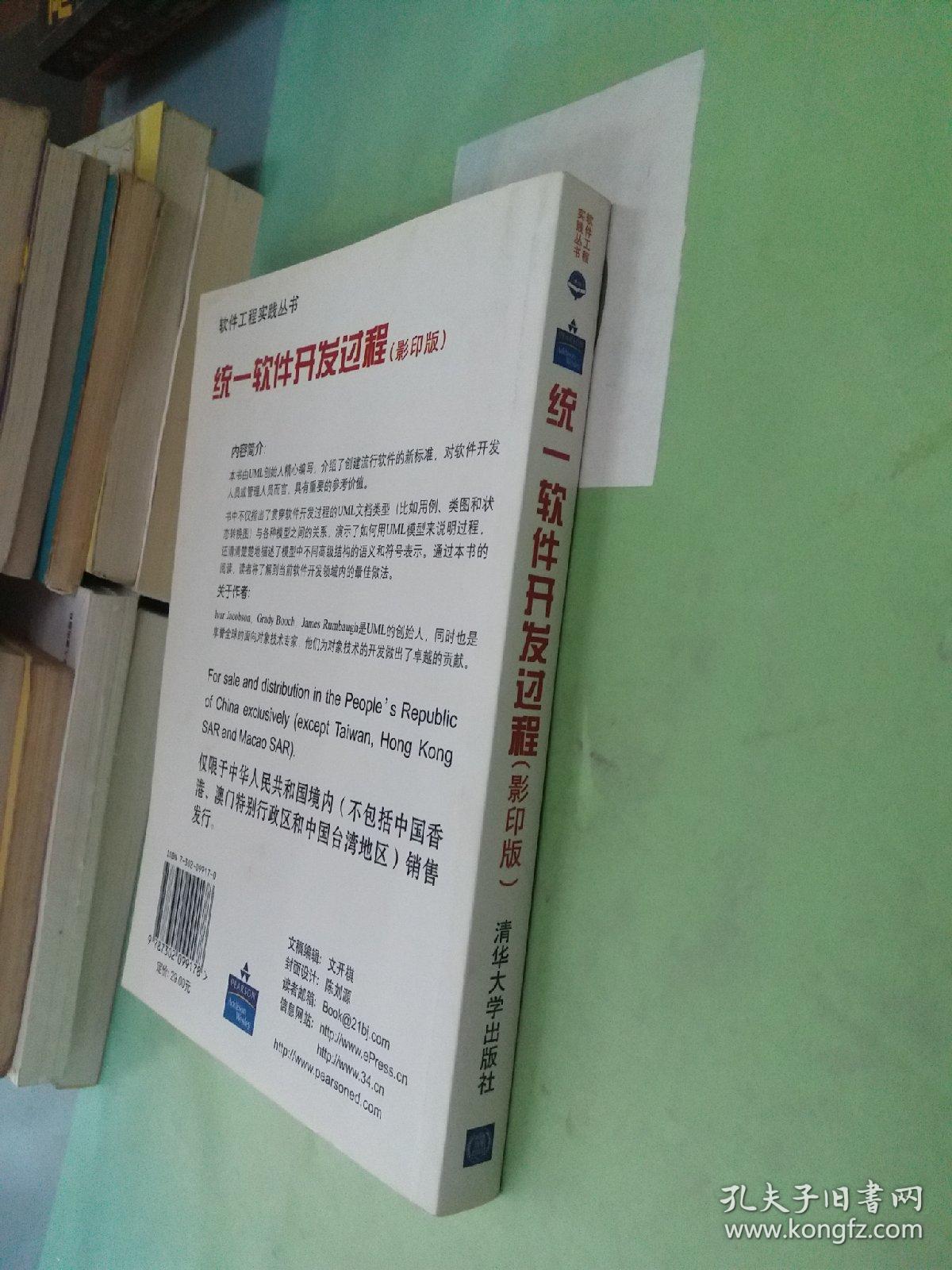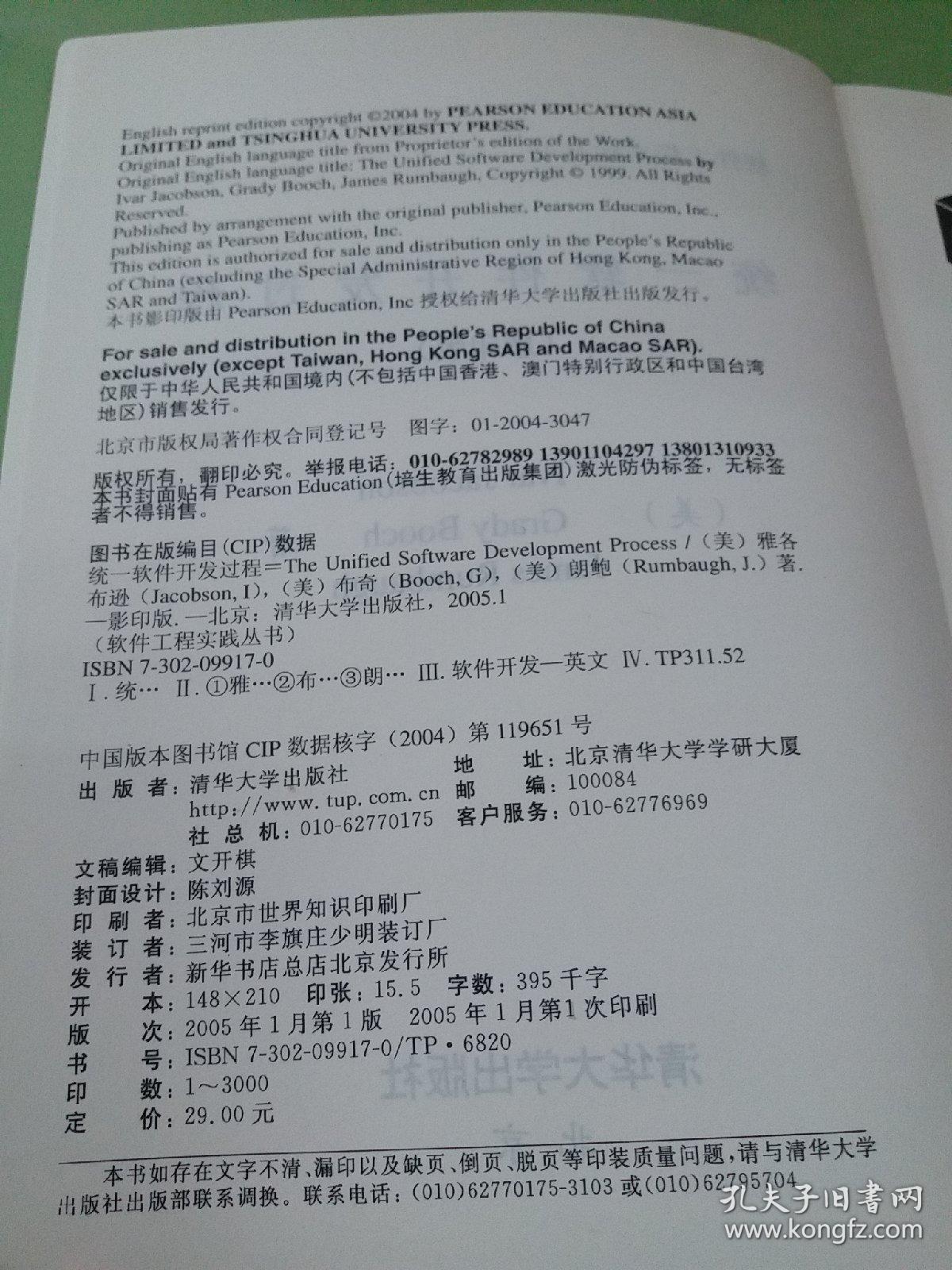
统一软件开发过程
¥ 5.6 九品
仅1件
河南鹤壁
认证卖家担保交易快速发货售后保障
作者Ivar Jacobson;Grady Booch;James Rumbaugh
出版社清华大学出版社
出版时间2005-01
版次1
装帧平装
货号火1-2-6
上书时间2023-05-10
- 在售商品 暂无
- 平均发货时间 5小时
- 好评率 暂无
- 最新上架
商品详情
- 品相描述:九品
图书标准信息
- 作者 Ivar Jacobson;Grady Booch;James Rumbaugh
- 出版社 清华大学出版社
- 出版时间 2005-01
- 版次 1
- ISBN 9787302099178
- 定价 29.00元
- 装帧 平装
- 开本 其他
- 纸张 胶版纸
- 页数 463页
- 字数 395千字
- 【内容简介】
-
本书由UML创始人精心编写,介绍了创建流行软件的新标准,对软件开发人员或管理人员而言,具有重要的参考价值。
书中不仅指出了贯穿软件开发过程UML文档类型(比如用例、类图和状态转换图)与各种模型之间的关系,演示了如何用UML模型来说明过程,还清清楚楚地描述了模型中不同高级结构的语义和符号表示。通过本书的阅读,读者将了解到当前软件领域内的最佳做法。 - 【作者简介】
- Ivar Jacobson,Grady Booch,James Rumbaugh是UML的创始人,同时也是享誉全球的面向象技术专家,他们为对象技术的开发做出了卓越的贡献。
- 【目录】
-
Part I: The Unified Software Development Process
Chapter 1: The Unified Process: Use-Case Driven, Architecture-Centric, Iterative, and Incremental
1.1 The Unified Process in a Nutshell
1.2 The Unified Process Is Use-Case Driven
1.3 The Unified Process Is Architecture-Centric
1.4 The Unified Process Is Iterative and Incremental
1.5 The Life of the Unified Process
1.6 An Integrated Process
Chapter 2: The Four Ps: People, Project, Product, and Process in Software Development
2.1 People Are Crucial
2.2 Projects Make the Product
2.3 Product Is More Than Code
2.4 Process Directs Projects
2.5 Tools Are Integral to Process
2.6 References
Chapter 3: A Use-Case-Driven Process
3.1 Use-Case-Driven Development in Brief
3.2 Why Use Cases?
3.3 Capturing the Use Cases
3.4 Analysis, Design, and Implementation to Realize the Use Cases
3.5 Testing the Use Cases
3.6 Smming Up
3.7 References
Chapter 4: An Architecture-Centric Process
4.1 Architecture in Brief
4.2 Why We Need Architecture
4.3 Use Cases and Architecture
4.4 The Steps to an Architecture
4.5 Finally, an Architecture Description!
4.6 Three Interesting Concepts
4.7 References
Chapter 5: An Iterative and Incremental Process
5.1 Iterative and Incremental in Brief
5.2 Why Iterative and Incremental Development?
5.3 The Iterative Approach is Risk-Driven
5.4 The Generic Iteration
5.5 The Result of an Iteration Is an Increment
5.6 Iterations over the Life Cycle
5.7 Models Evolve from Iterations
5.8 Iterations Challenge the Organization
5.9 References
Part II: The Core Workflows
Chapter 6: Requirements Capture: From Vision to Requirements
6.1 Why Requirements Capture Is Difficult
6.2 The Purpose of the Requirements Workflow
6.3 Overview of Requirements Capture
6.4 The Role of Requirements in the Software Life Cycle
6.5 Understanding the System Context Using a Domain Model
6.6 Understanding the System Context Using a Business Model
6.7 Supplementary Requirements
6.8 Summary
6.9 References
Chapter 7: Capturing the Requirements as Use Cases
7.1 Introduction
7.2 Artifacts
7.3 Workers
7.4 Workflow
7.5 Summary of the Requirements Workflow
7.6 References
Chapter 8:Analysis
8.1 Introduction
8.2 Analysis in Brief
8.3 The Role of Analysis in the Software Life Cycle
8.4 Artifacts
8.5 Workers
8.6 Wordflow
8.7 Summary of Analysis
8.8 References
Chapter 9: Design
9.1 Introduction
9.2 The Role of Design in the Software Life Cycle
9.3 Artifacts
9.4 Workers
9.5 Wordflow
9.6 Summary of Design
9.7 References
Chapter 10: Implementation
10.1 Introduction
10.2 The Role of Implementation in the Software Life Cycle
10.3 Artifacts
10.4 Workers
10.5 Workflow
10.6 Summary of Implementation
10.7 References
Chapter 11:Test
11.1 Introduction
11.2 The Role of Testing in the Software Life Cycle
11.3 Artifacts
11.4 Workers
11.5 Workflow
11.6 Summary of Testing
11.7 References
Part III: Iterative and Incremental Development
Chapter 12: The Need for Balance
12.1 The Need for Balance
12.2 The Phases Are the First Division of Work
12.3 The Generic Iteration Revisited
12.4 Planning Precedes Doing
12.5 Risks Affect project Planning
12.6 Use-Case Prioritization
12.7 Resources Needed
12.8 Assess the Iterations and Phases
Chapter 13: Inception Launches the Project
13.1 The Inception Phase in Brief
13.2 Early in the Inception Phase
13.3 The Archetypal Inception Iteration Workflow
13.4 Execute the Core Workflows, Requirements to Test
13.5 Make the Initial Business Case
13.6 Assess the Iteration(s)in the Inception Phase
13.7 Planning the Elaboration Phase
13.8 The Deliverables for the Inception Phase
Chapter 14: the Elaboration Phase Makes the Architectural Baseline
14.1 The Elaboration Phase in Brief
14.2 Early in the Elaboration Phase
14.3 The Archetypal Elaboration Iteration Workflow
14.4 Execute the Core Workflows-Requirements to Test
14.5 Make the Business Case
14.6 Assess the Iterations in the Elaboration Phase
14.7 Planning the Construction Phase
14.8 The Key Deliverables
Chapter 15: Construction Leads to Initial Operational Capability
15.1 The Construction Phase in Brief
15.2 Early in the Construction Phase
15.3 The Archetypal Construction Iteration Workflow
15.4 Execute the Core Workflows-Requirements to Testing
15.5 Controlling the Business Case
15.6 Assess the Iterations and the Construction Phase
15.7 Planning the Transition Phase
15.8 The Key Deliverables
Chapter 16: Transition Completes Product Release
16.1 The Transition Phase in Brief
16.2 Early in the Transition Phase
16.3 The Core Workflows Play a Small Role in this Phase
16.4 What We Do in the Transition Phase
16.5 Completing the Business Case
16.6 Assess the Transition Phase
16.7 Planning the Next Release or Generation
16.8 The Key Deliverables
Chapter 17: Making the Unified Process Work
17.1 The Unified Process Helps You Deal With Complexity
17.2 The Major Themes
17.3 Management Leads Conversion to Unified Process
17.4 Specializing the Unified Process
17.5 Relate to the Broader Community
17.6 Get the Benefits of the Unified Process
17.7 References
Appendix A: Overview of the UML
A.1 Introduction
A.2 Graphical Notation
A.3 Glossary of Terms
A.4 References
Appendix B: The Unified Process-Specific Extensions of the UML
B.1 Introduction
B.2 Stereotypes
B.3 Tagged Values
B.4 Graphical Notation
B.5 References
Appendix C: General Glossary
C.1 Introduction
C.2 Terms
Index
点击展开
点击收起
— 没有更多了 —














以下为对购买帮助不大的评价